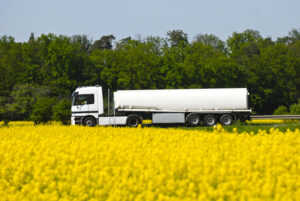How much biomass can Europe burn?
By Sini Eräjää, EU Bioenergy Policy Officer, Birdlife Europe and Central Asia and the European Environmental Bureau.
When it comes to the sustainability of Europe’s bioenergy use, the scale of it is absolutely crucial. There are sustainable biomass sources that we can and should use for energy, but there’s only a limited amount of them available.
More than half of the EU’s renewable energy target for 2020 is expected to be made out of bioenergy. Today, roughly 70% of biomass originates from forests and 17% from agriculture, the rest being different kinds of waste streams. The growing energy demand puts a growing pressure on Europe’s forests and agricultural lands, but it’s not the only sector keen on these resources.
Birdlife Europe and Central Asia and Transport & Environment have commissioned and taken part in a range of studies on the availability of biomass resources in Europe to answer the burning question: how much biomass – and what kind of biomass – could Europe burn by 2030 while making sure that the environmental and climate risks remain low?
As explained in our latest briefing, the answer is that we should burn less than what the Commission planned to burn and we should burn different kinds of biomass rather than what we are currently burning.
To come to this conclusion, the studies analysed and took into consideration all the major sustainability aspects of bioenergy. Existing, competing uses of the biomass resources like use of wood for construction, paper and panel manufacturing, use of agricultural residues for animal husbandry and composting, and use of manure for land care were taken into account. The studies also considered the impacts of improved recycling and reduction of waste (which lowers the availability of waste biomass), as well as additional sustainability requirements such as the need to leave agricultural and forestry residues on the ground or the need to increase forest protection.
In line with these constrains the level of biomass available for energy use in the EU in 2030 is 152 Mtoe. In 2014, the EU used 129 Mtoe of biomass and renewable waste. On the other hand, the Commission’s projections for bioenergy demand in 2030 range from 162 to 192 Mtoe, i.e. well above what could be used sustainably. Pushing the EU’s demand for bioenergy beyond what is sustainably feasible will force us to resort to problematic bioenergy sources like crops and whole trees.
When the sustainable biomass potential is compared with the EU targets of at least 27% by 2030, sustainable biomass could account for 30% of all renewables by 2030. This means that the share of other renewables should significantly increase in the near future to allow the EU to reach its renewable energy targets in a sustainable manner.

Looking at the composition of the different kinds of biomass sources that could be used for energy, it is also clear that the kind of biomass used for energy needs to be changed. According to studies, agricultural waste and residues are the largest single feedstock (52.4%), followed by non-forest woody residues (42.6% – these are processing residues of the forest industry such as sawdust, bark, and black liquor) and manure (18.9%). Today’s dominant bioenergy source, wood, should be significantly scaled down.
The contribution made by sustainable biomass to the European renewable energy mix will hence be relatively modest and not enough to meet projections. The new EU policy on bioenergy and renewable energy needs to ensure that we stay within the limits of what is sustainable.
Banner photo: © Shutterstock





